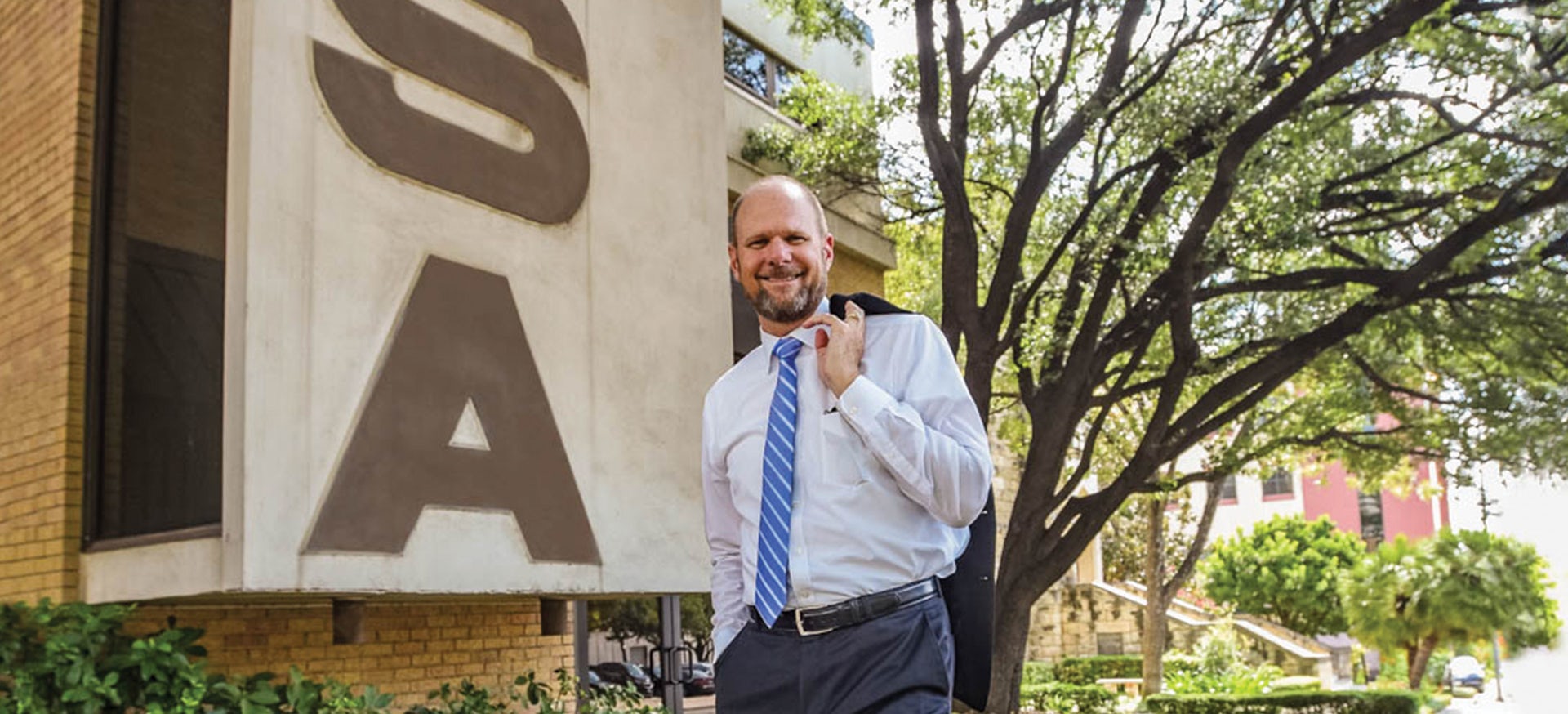Dr. Kevin Brown built his career creating, supporting and advocating for 21st century learning environments. He was recently named the Executive Director of the Texas Association of School Administrators (TASA), after nearly two decades with Alamo Heights Independent School District. He sees his role at TASA as a once-in-a-lifetime opportunity to have a wider influence on public education across the state.
What are some of the challenges of your new role?
The challenge is that we live in such a polarized time in our country. Whether you’re on the far right or the far left or somewhere in between, there’s only one institution in our country that brings people together. And that’s your local public school.
Regardless of who you are or your background, everybody in a local community comes together and advocates for their school. And to that end, public education is critical to our country. As a nation, we have evolved to better fulfill the promises to educate every single child.
Some legislators have forgotten the importance of public education and the role it plays—not only in the lives of those individual children, but also for our democracy and our business environment. The laws don’t support us a lot of the time and it makes it more difficult to do our work.
And how does that change?
Educators ought to have a significant place at the table to impact and influence policy in a bigger way than we do today. We don’t think we have all the right answers, but we have first-hand experience and knowledge about the needs of our schools. Oftentimes we’re not asked to the table. Or even worse, we’re asked what our opinions are, and they’re dismissed.
Public education is a cause worth fighting for, and every American ought to fight for it. When teachers go into the classroom and teach, it’s not only an act of humanity to help the students in their classroom, but it’s an act of patriotism. What they do in serving students is a service to our country and a service to our democracy.
What are some of the biggest issues facing Texas schools?
A big issue we face today is an overreliance on standardized tests. It’s preventing schools from preparing kids for the 21st century. Everybody wants schools to be accountable. I always ask the question, “To whom should we be accountable and for what?”
We’re asking to be accountable first to what our community wants and needs, then to the state and federal government. Standardized tests have a place and always will, but even our former commissioner said that the state test has become a perversion of its original intent. They incentivize teachers, principals and districts to teach to the test at the expense of everything else.
The irony in all of this is colleges and workplaces aren’t valuing those skills. They want kids who are creative, entrepreneurial and demonstrate perseverance through challenging times. We need to evolve to a more performance-based assessment with more opportunities for kids to solve real-world problems.
How can a school become more student-focused, as opposed to test-focused?
At Alamo Heights ISD, we developed a profile of a learner. It’s an exercise in establishing a culture that suits the needs of your unique community. We engaged parents, students, teachers, business members and community members, asking what they want for their students and their learning. What did we find?
They want far more than what the standardized tests ask us to do. They want kids to learn to be leaders. They want them to learn in the arts and participate in extracurricular activities. They want to be engaged in the work. They want to accomplish something that’s meaningful to them.
I’ve never met a parent who said, “I want my child to sit quietly all day and take notes and prepare for a state test.” I’ve heard parents say “I want my kids to go to a great college and be challenged and have a love of learning.”
What do students need from their school facilities in order to create that love of learning?
Many of the schools in Texas are older facilities. At Alamo Heights, the oldest operating campus was built in the 1920s. These can be beautiful facilities but built for a factory model of schooling.
Today’s learning spaces need to emulate the experience students will have when they go out into the work world. If you look at many offices today, they don’t look like classrooms. They have open space, support conversations and teamwork and focus on project-driven work.
It’s putting wheels on the desks, chairs and tables so things can be easily rearranged based on the learning experience of that moment. It’s providing the technology, electricity and bandwidth they need in the classroom. It’s providing natural and dimmable lighting and walls that open up.
It’s difficult to create 21st century learning experiences without some funding for new facilities, furniture and technology. School districts in Texas do a phenomenal job of engaging their community to understand those needs and their local community is very supportive of that, as well.
















